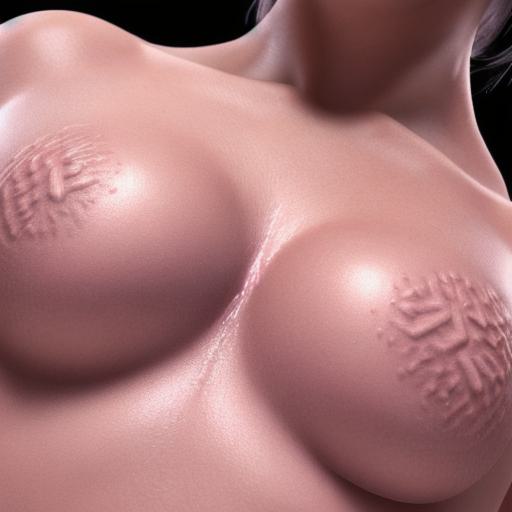Ultrasound is a powerful tool for visualizing internal organs and tissues. Whether you’re a healthcare professional or simply interested in capturing stunning images, understanding how to take the best 3D ultrasound pictures can make all the difference. In this comprehensive guide, we’ll explore the key elements to consider when taking 3D ultrasound pictures, as well as some tips and tricks for optimizing your results.
The Essential Elements of 3D Ultrasound Imaging
Before diving into specific techniques, it’s important to understand the basic principles behind 3D ultrasound imaging. Here are a few key elements to keep in mind:
- Image Quality: To capture high-quality 3D images, you’ll need to use a device that produces clear and detailed images. Look for a machine with a high-resolution display and advanced image processing capabilities.
- Scan Time: The amount of time it takes to capture an image will depend on the complexity of the image and the speed of your device. However, in general, shorter scan times can produce better images.
- Positioning: Proper positioning of the ultrasound transducer is essential for capturing high-quality 3D images. You’ll want to position the transducer at the right angle and depth to get the best results.
- Lighting: Lighting can have a significant impact on the quality of your images. Make sure to use appropriate lighting to reduce glare and improve contrast.
- Patient Position: The patient’s position will also affect the quality of the images. Try to keep the patient still during the scan, as movement can cause artifacts in the image.
Tips for Taking Stunning 3D Ultrasound Pictures
Now that you have a better understanding of the essential elements of 3D ultrasound imaging, let’s explore some tips and tricks for taking stunning pictures:
- Use High-Quality Transducers: The type of transducer you use will have a significant impact on the quality of your images. Look for high-quality transducers with advanced features like multiplane imaging and tissue harmonic imaging to capture stunning 3D images.
- Experiment with Different Angles: To capture the best possible 3D images, try experimenting with different angles of incidence. You may need to adjust your position or angle to get the right perspective for each image.
- Adjust the Gain and Contrast Settings: The gain and contrast settings on your ultrasound machine can have a significant impact on the quality of your images. Experiment with different settings to find the best combination for your specific application.
- Use Color Mapping: Color mapping can help you visualize internal structures in a more intuitive way. Try using color mapping to highlight key anatomical features like blood vessels and nerves.
- Take Multiple Images: To capture the best possible 3D images, take multiple images from different angles and positions. You may need to stitch these images together using specialized software to create a complete 3D image.
- Post-Process Your Images: Once you’ve captured your images, consider post-processing them to improve their quality. You can use tools like contrast enhancement and noise reduction to improve the clarity of your images.
Real-Life Examples of Stunning 3D Ultrasound Images
To help illustrate the potential of 3D ultrasound imaging, here are a few real-life examples:
- Cardiothoracic Surgery: 3D ultrasound imaging is increasingly being used in cardiothoracic surgery to visualize internal structures and guide surgical procedures. The high-resolution images provided by 3D ultrasound can help surgeons identify potential complications and make more precise incisions.
- Neurological Imaging: 3D ultrasound imaging can be used to visualize the brain and other neurological structures in remarkable detail. This can be particularly useful for diagnosing conditions like tumors and vascular anomalies.
- Orthopedic Surgery: 3D ultrasound imaging can help orthopedic surgeons visualize joints and soft tissues in 3D, making it easier to identify potential issues and plan surgical procedures.
- Obstetric Imaging: 3D ultrasound imaging can provide stunning images of developing fetuses, allowing mothers-to-be to see their babies in incredible detail.
FAQs
- What kind of device is needed to take 3D ultrasound pictures?

You’ll need an ultrasound machine that produces high-quality images and has advanced features like multiplane imaging and tissue harmonic imaging. - How long does it take to capture a 3D image?
The amount of time it takes to capture a 3D image will depend on the complexity of the image and the speed of your device. However, shorter scan times can produce better images. - Can I use color mapping in 3D ultrasound imaging?
Yes, color mapping can be used to highlight key anatomical features like blood vessels and nerves in 3D ultrasound images. - How do I post-process my 3D ultrasound images?
You can use tools like contrast enhancement and noise reduction to improve the clarity of your 3D ultrasound images after capturing them. - Are there any limitations to using 3D ultrasound imaging?
While 3D ultrasound imaging has many benefits, it does have some limitations. For example, it may not be suitable for certain types of tissue or organs, and it can be more time-consuming than traditional 2D imaging techniques.
Conclusion
Taking the best 3D ultrasound pictures requires a combination of technical expertise and creative thinking. By understanding the essential elements of 3D ultrasound imaging and experimenting with different techniques, you can capture stunning images that provide valuable insights into internal structures and organs. Whether you’re a healthcare professional or simply interested in capturing beautiful images, 3D ultrasound imaging is a powerful tool that can help you see the world in a whole new way.



